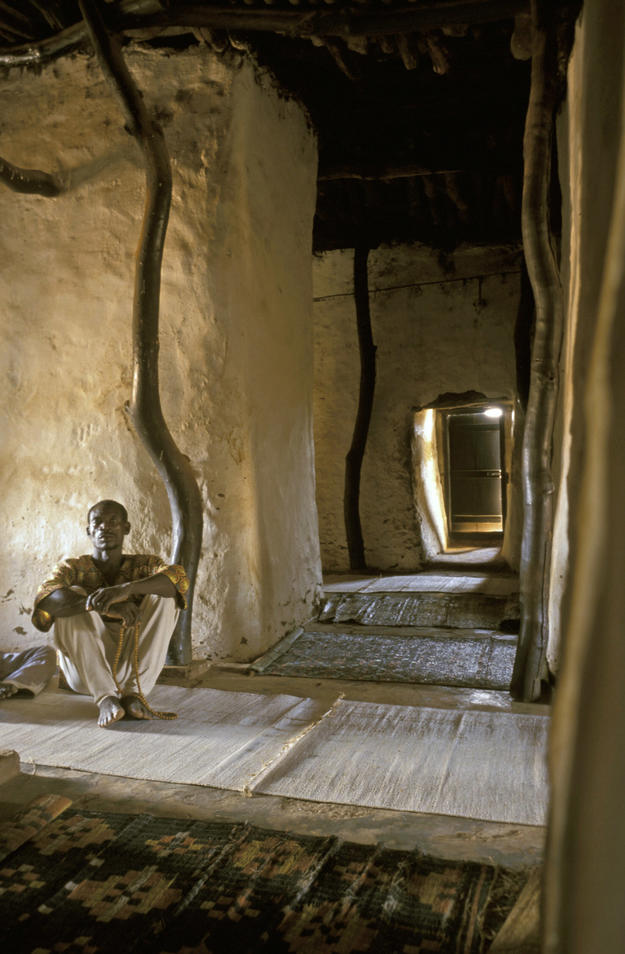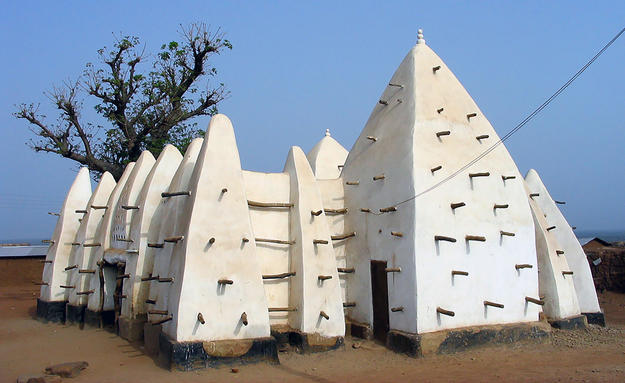Larabanga Mosque
Built primarily from packed earth, Larabanga is Ghana’s oldest mosque, and one of the country’s most revered religious sites. The seventeenth century structure’s style was heavily influenced by western Sudanese architecture, characterized by the use of horizontal timber, pyramidal towers, buttresses, and triangular perforations over entry portals. It is one of only eight mosques in the country built in this manner, and has long been a pilgrimage site for Ghana’s Muslim population. The northwest corner of the building features a minaret and a mihrab, a niche in the mosque wall at the point nearest to Mecca, toward which the congregation faces to pray.
A team of conservators reconstructed the collapsed minaret and mihrab
A conservation effort of the 1970s was not as effective as had been hoped and ultimately moisture was trapped within the building’s earthen walls and wooden support beams. This caused the timber to rot; termite infestation added to the problems. Damage from wind and rain hastened the collapse of the mosque’s minaret. The monument was included on the 2002 World Monuments Watch, which provided an opportunity for World Monuments Fund to sponsor the work of removing cement from the building’s walls and replacing it with a traditional mud-based plaster. A team of conservators replaced rotting wood, repaired the building’s portal, and reconstructed the collapsed minaret and mihrab.
Community members were employed to carry out conservation work
WMF’s work has resulted in a more structurally sound and historically authentic building, to serve a growing congregation. Visitors are attracted by Larabanga’s unique architecture and craftsmanship, and use of traditional building techniques sparked a renewed interest in the artisanship of mosque construction. Community members were employed to carry out conservation work, resulting in a newly trained local workforce, and a more historically and environmentally relevant building. Local residents have adopted greater responsibly for regular maintenance of the site, and committed to build a community center to accommodate the growing population of tourists and religious congregants.



